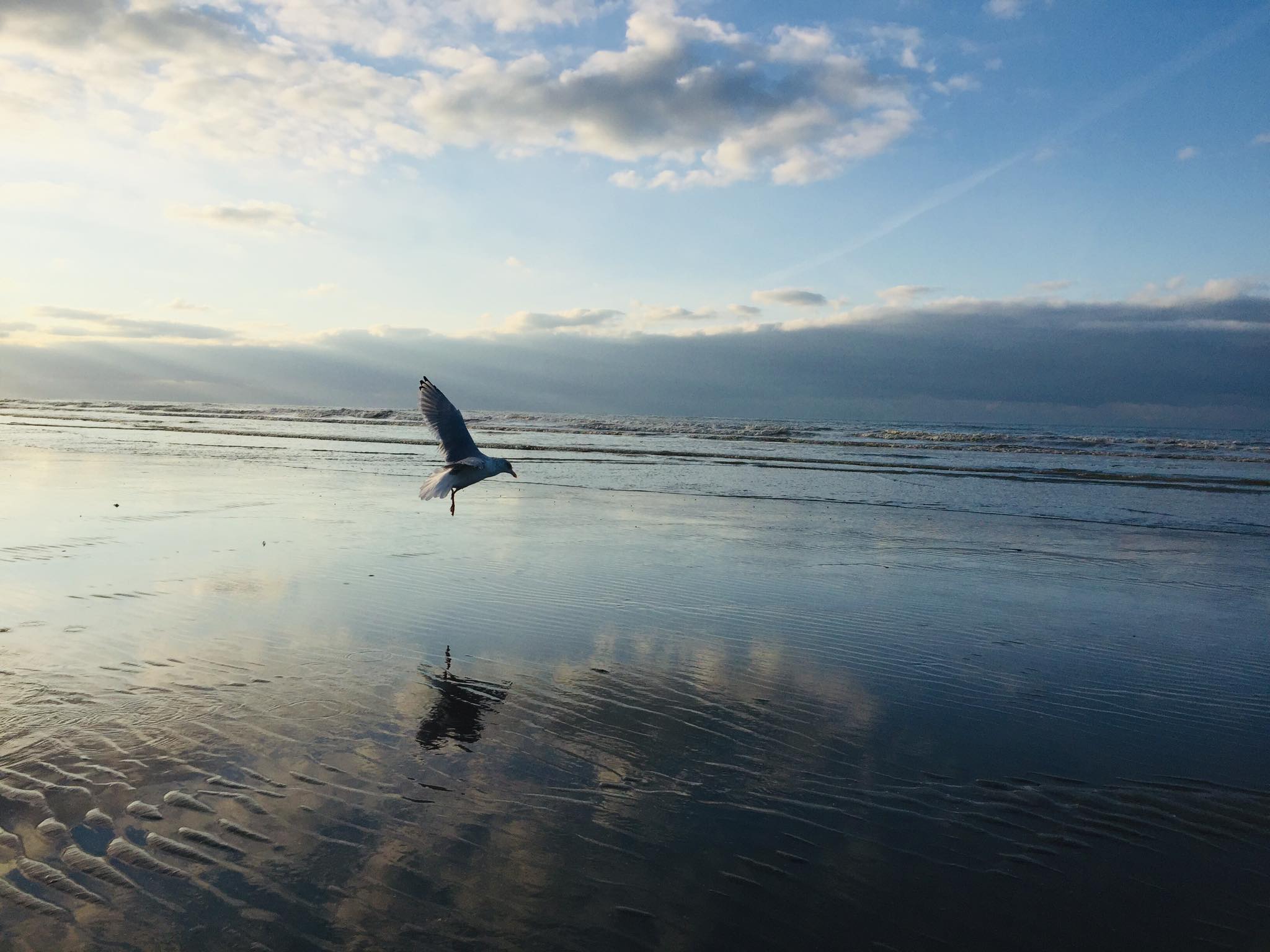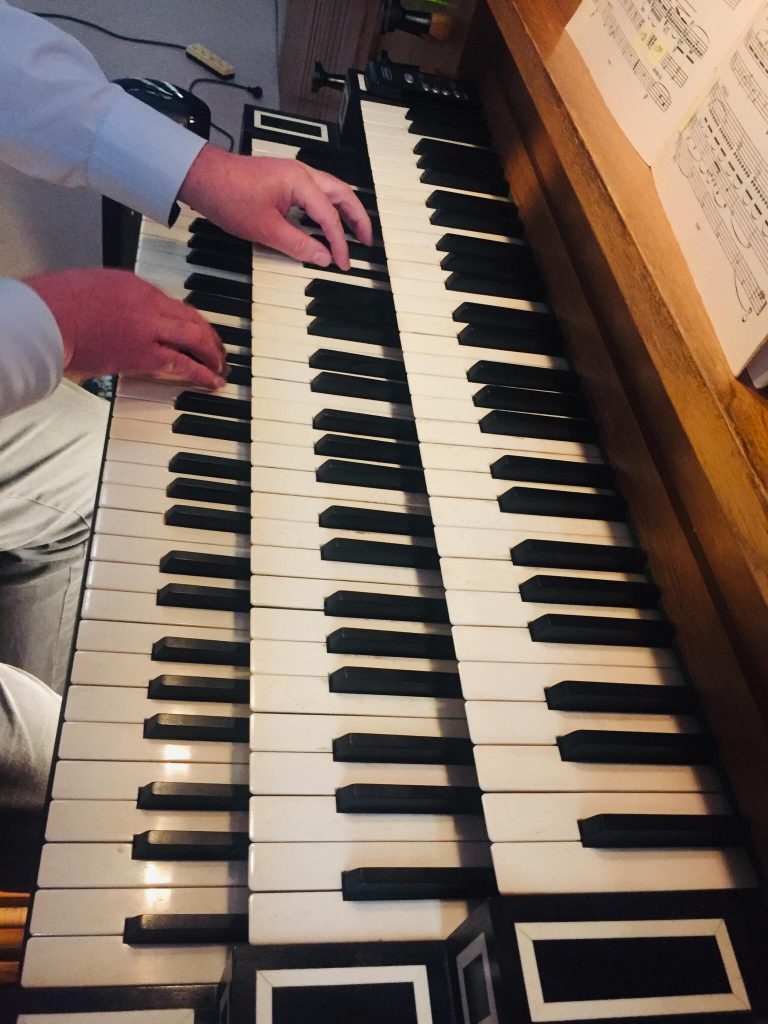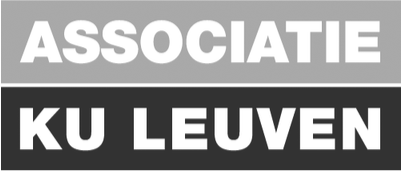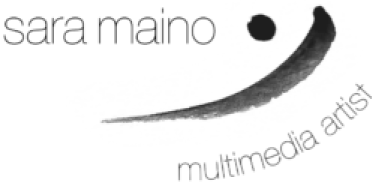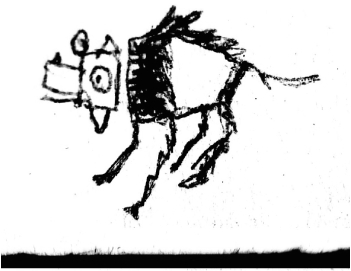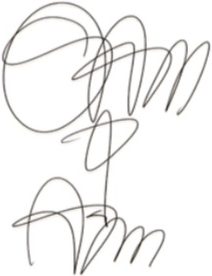Dec 14, 2020
KOKSIJDE, Belgium —
text by Marina Kazakova
Initially, the most striking thing about Jan Vermeire is not his taste for music, nor the warmth of his manner. It is the sea waves of his hands and shoes moving as though along the beach over multiple keyboards. When you look at him playing an organ, you realise that what you see is an unearthly flight of twenty waltzing fingers, two swimming feet and one back – open like a butterfly to the audience behind. The supernatural language that the artist has developed and the music accent formed by his motherland are as mesmerising as the ‘King of musical instruments’ that the organist conquers in front of the spectators for 4 decades already.
Yet even if he is based in Veurne (Belgium), Jan Vermeire remains cosmopolitan in outlook and persuasion. The day we meet for an interview, he is supposed to perform in Venice at San Trovaso church. Outside the pandemic circumstances, he spends every year between festivals in Europe, the US, Russia and Australia. I catch Jan while he is in Belgium due to Covid restrictions. We enjoy an unhurried conversation at ‘Onze-Lieve-Vrouw ter Duinenkerk’ church in Koksijde.
In a crisp white shirt, he prepares coffee and then starts the Prelude in D flat major of Chopin. Chopin on an organ – good heavens! A moment of tenderness, like a shaft of sunlight suddenly breaking through the stained-glass windows of the church – it illumines the gray December morning. The whole world stops and you see – in your mind’s ear, you see something you’ve never seen before.
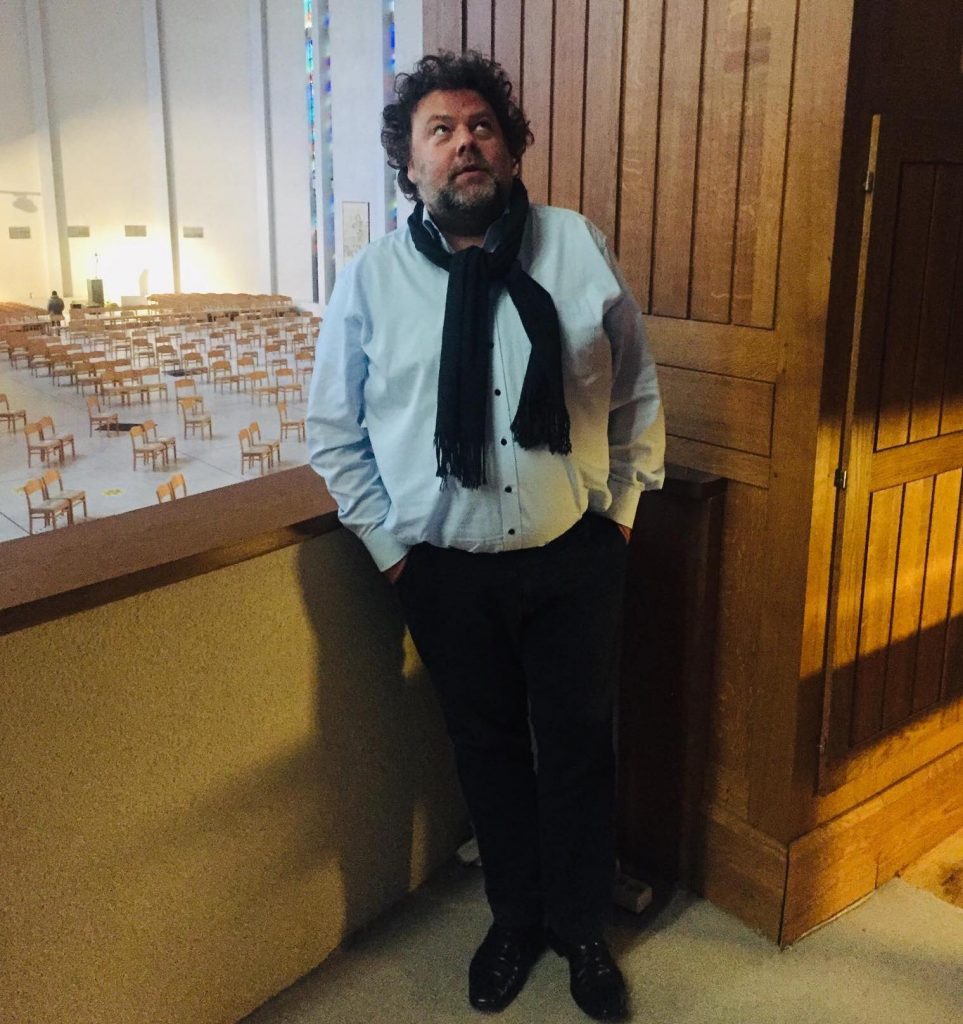
Jan Vermeire at Onze-Lieve-Vrouw ter Duinenkerk
Born by the North Sea
Jan was born in Nieuwpoort, a town on the Belgian Riviera that has a deep relationship with the North Sea. Nieuwpoort has its roots in medieval times, saw Spanish and Dutch armies try to conquer it, and had its most devastating blow during the Great War. The town boasts the largest marina in North Europe that attracts sailing aficionados from all across the continent. With 2,000 berths, it’s quite a sight and one that you can enjoy from the two wooden piers that lead to the marina and the fishing port. World-renowned sailors, fishermen or shrimpers, but not celebrated organists is what you would expect from this seaside resort. “Seals use Nieuwpoort as a rest stop. I do also”, laughs Jan. “Born by the sea, I’m used to go to the sea to clear my mind”.
He set out to become a professional organist at the age of 12. “Since my early childhood, I was attracted to music, but when I first saw the organ at Saint-Mary’s Church in Nieuwpoort, it was when I realized that I have a feeling for it”, confesses Jan. “A never-ending dialogue between me and the instrument has been happening for more than several decades already”.
 Jan was 13 years old the first time he sat down to play the Loncke organ at Sint-Walburgakerk in Veurne. Studying alongside an outstanding music teacher Robert Deleersnyder at the Music Academy of Veurne, he diligently worked to learn the instrument’s three manuals, spread of floor pedals and columns of knobs and switches.
Jan was 13 years old the first time he sat down to play the Loncke organ at Sint-Walburgakerk in Veurne. Studying alongside an outstanding music teacher Robert Deleersnyder at the Music Academy of Veurne, he diligently worked to learn the instrument’s three manuals, spread of floor pedals and columns of knobs and switches.
Today, at 52, Vermeire is the shepherd of the grand pipe organ of the Onze-Lieve-Vrouw ter Duinenkerk as well as the artistic director of the International Organ Festival of Koksijde, Veurne-Nieuwpoort and Haringe, and of the Festival International d’Orgue en Flandre.
Sitting at the console, Jan is clearly at home. He wears a pair of black leather goofy-looking shoes to best feel the organ’s pedals. His back is straight and open to feel what’s going on behind him on the altar.
“From an organist’s point of view, it can do anything that I want. It can play down to the quietest, barehearted notes and up to the storming sea; it can be manipulated to sound like almost anything: from a brass choir to a solo flute, ” confesses Jan.
Giver of Rhythm
The pipe organ is the closest instrument physiologically to the human voice, and with its capacity for sustained tone, the ideal accompaniment to the voice.
The organ is often called the one-man symphony, and there are definitely similarities in composing for organ and a choir. It’s little wonder that after obtaining a degree as an organist at the Royal Conservatory of Music of Brussels with the famous professor and organist Hubert Schoonbroodt, Jan studied choral conducting with Florian Heyerick at the Royal Conservatory of Ghent. Now, he is also the ‘Giver of Rhythm’ of the ‘Schola Gregoriana Henricus Beauvarlet’ and the church choir of the Onze-Lieve-Vrouw ter Duinenkerk.
The nature of the choir conductor has shifted and changed in the past years, but a certain air of magic still surrounds those mysterious figures on the podium. Why is it that a single person, standing silent, armed with just a baton, or sometimes just their hands, can be held responsible for the sonic output of dozens of people?
“Like all artistic mysteries, a full answer evades us. In a more mundane way, we might think of conductors as the equivalent of team managers. You can’t measure precisely what it is that we do – but you feel it when you see it. While it is possible for choirs to perform without conductors, most choose to have one”, says Jan.
When asked why he never composed any music for the organ, Igor Stravinsky replied, “The monster does not breathe.” It is true, there is not a lot of space for “musical breath” with such a massive instrument – and its breathless quality can give it a very artificial, robotic sound. When Jan holds down a note, the organ just keeps on playing. Yet, ‘”the organist can make the instrument breathe by the way he articulates it”, says Jan. When we sing, we naturally take breaths – the organist must obviously be aware of this.
Intriguing artistic collaborations
Today, the organ, the most complex of musical instruments, might seem daunting to some contemporary composers and musicians. However, “fruitful collaborations between composers, organists and other musicians and artists, have, fortunately, become commonplace”, says Jan.
The organist is putting his passion for organ music to intriguing artistic collaborations. He regularly collaborates with flamenco musicians Michel Gillain and Antonio Paz in the production ‘Tierra y Aire’. Together with the storyteller Peter Van Bouwel, he brings organ fairy-tales for children on stage.
Moreover, Jan often plays with other classical musicians such as Alain De Rudder (trumpet), Ilse Vromans (flute and traverso) and is a member of the Trio Seraphim with soprano Hilde Coppé and trumpet player Bart Coppé. With another companion, the Ukrainian bayan player Bogdan Nesterenko, he has set up a program for Russian accordion and organ, a very original combination.
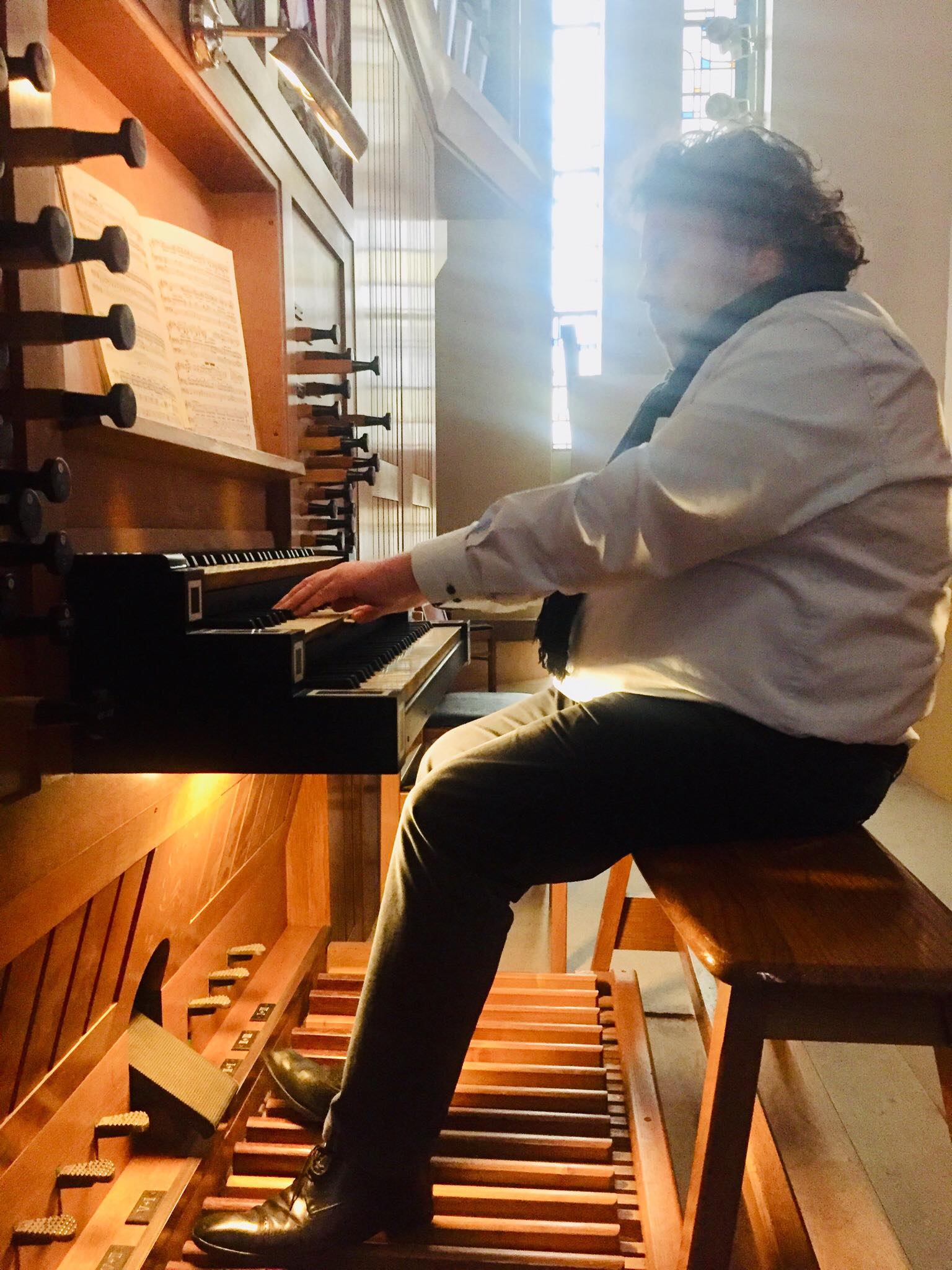
Jan Vermeire playing the organ at Onze-Lieve-Vrouw ter Duinenkerk’
The path to the Cathedral of Light
From 1994 to 2011 Jan was the organist of the Sint-Walburgakerk in Veurne. Since December 2011, Onze-Lieve-Vrouw ter Duinenkerk in Koksijde became his ‘home church’. He now spends the majority of his time at the church, plays at three masses on weekends as well as at dozen of other events.
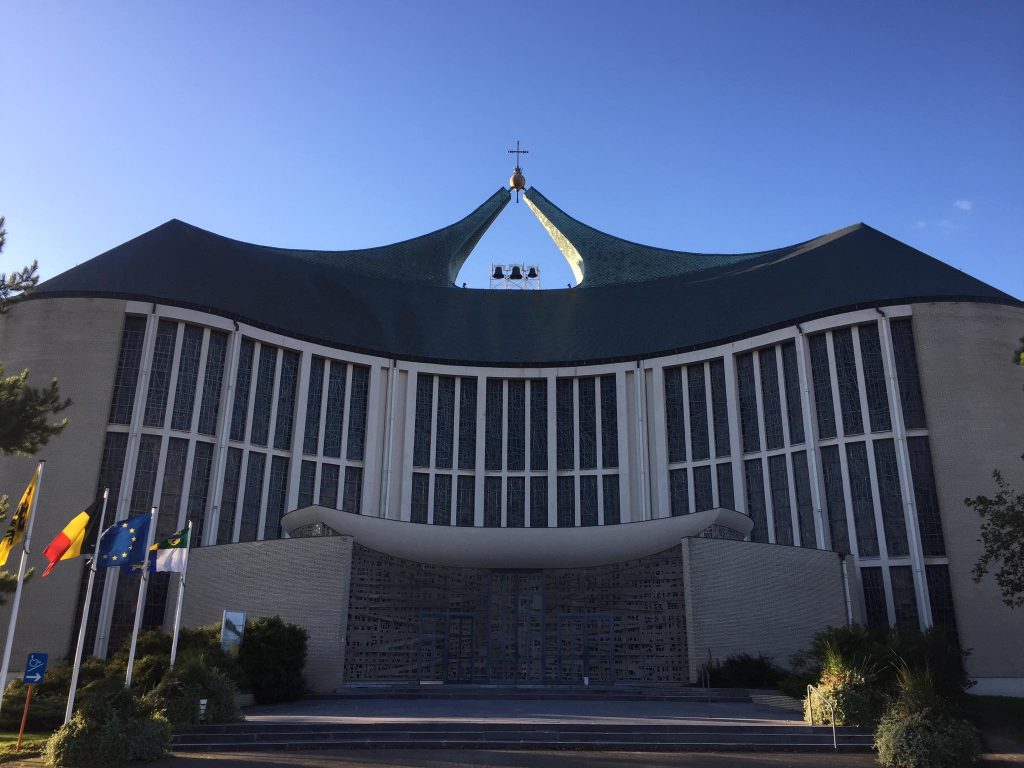
Onze-Lieve-Vrouw ter Duinenkerk
Behind the façade of the well-maintained cathedral lays more than an interesting constructivist interior capturing the spirit of the house of God. One of the most modern churches in Belgium built by architect J. Lantsoght from Bruges, counts 1285 seats and is nicknamed as “The Cathedral of the Light”. This remarkable pearl of architecture, built between 1958 and 1965, is a construction of steel, concrete and stained glass (by Gabriel Loire), with a ground plan in the shape of a cockle and a roof that resembles a dune. A perfect mirror of the landscape it is surrounded with.

Onze-Lieve-Vrouw ter Duinenkerk
The organ oftentimes inspires awe even among those who are far from the world of music: the majestic case of the instrument sometimes resembles a fantastic castle, and many constructive elements unite into the miracle of engineering thought.
Why do people freeze in mid-stride every time they hear the organ?
“Unlike listening to a regular symphony, where music often feels as if it is coming from a particular direction, an organ’s sound completely occupies the church”, says Jan. There’s also a more sublime relationship between the instrument, the worshippers and the church in which it all happens. Organs are designed for physical spaces, so the church is as much a part of the instrument as the pipes and keyboards. “An organist knows how long it will take for a note to travel from one end of the church to another and so the tempo of music is to some extent determined by the church’s architecture”, explains Jan.
Jan took me on a tour up to the very heart of the organ. We were high above the pews. He opened a wooden cabinet that contained some of the organ pipes: some of them reminded me of massive candles, others were about as thick as bamboo trees. Seemed like Jan knew each of these pipes and had a sense of their characters, how to manage their supernatural temperaments. Coupled with the church entourage, the pictures of Belgium’s remote seaside towns like Koksijde, its churches and architectural heritage show a country that is both hauntingly beautiful and, in some way, archaic: resistant to globalisation and not deprived of its centuries-old traditions.
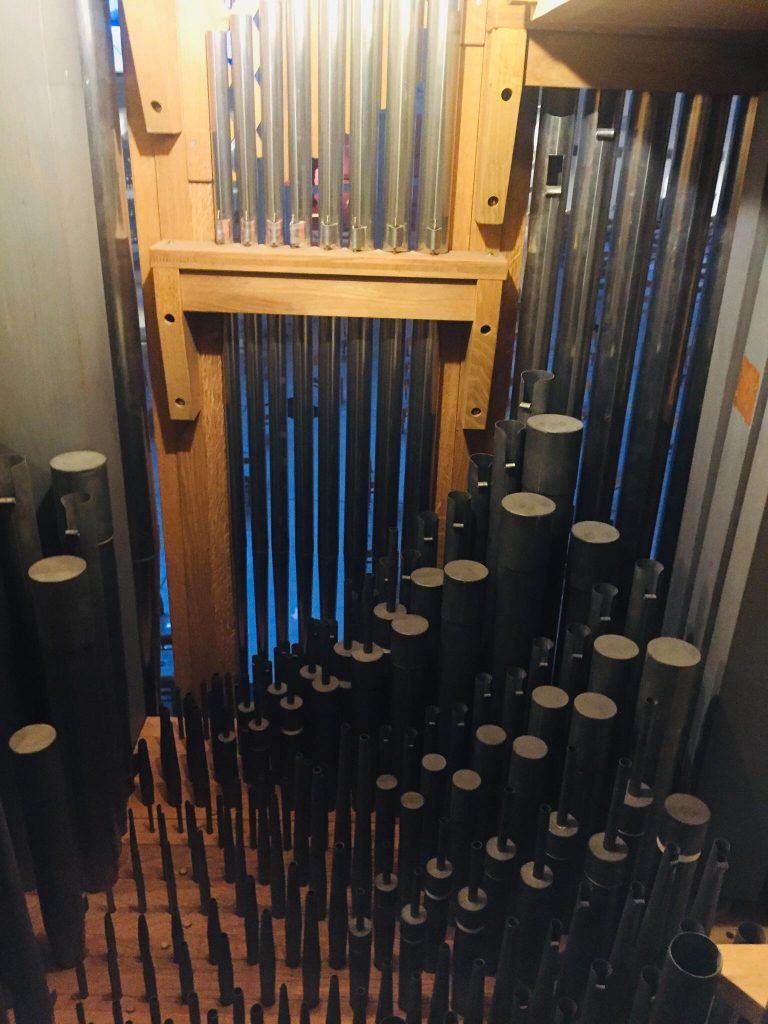
The organ at Onze-Lieve-Vrouw ter Duinenkerk
The experience of the music of Bach or Mozart the way they intended it
“The organ has the biggest repertoire of any instrument because it goes back so far, to the late medieval period. While developing the programme for our organ festivals, we are considering the specifics of each organ at every church. “Organs vary radically, and what may work well on one organ in a given acoustic may not possible on another. For example, a majestic 17th century Baroque organ with one manual only is best to feature old Flemish and Spanish organ music. The 19th century organs are showcasing the French Romantics. The point of our festivals is to experience the music of Bach or Mozart the way they intended it to be heard”, notes Jan.
‘The Festival International d’Orgue en Flandre’ started in France in 2003. It was a small event taking place in Hondschoote, Millam, Looberghe and Bourbourg. Within two decades, the festival has grown into a major international happening occuring in 10 locations: Bourbourg, Dunkerque, Hondschoote, Millam, West-Cappel, Esquelbecq, Arnèke, Houtkerque, Looberghe and Gravelines.
Undressing numerous organ-related stereotypes
Jan is known not to be afraid to engage in artistic experiments. In 2014, he and his collaborator Joost Prové carried out a unique trial ‘In Vino Musica’ at the International Organ Festival Koksijde: specific musical pieces were paired with certain wines country by country, starting from Germany, proceeding to France, then Italy and Spain.
Germany
Music: Praeludium en Fuga in a klein BWV 543, Johann Sebastian Bach (1685-1750)
Wine: Riesling Marienburg Grosses Gewachs 2012 – Weingut Clemens Busch – Mosel
France
Music: Bloemlezing uit de Messe pour les Convents François Couperin (1668-1733)
Wine: Le Classique 2013 – Domaine du Joncier – Rhône
Italy
Music: Concerto in a klein naar het concerto voor twee violen, strijkers en basso continuo, opus 3 nummer 8 van Antonio Vivaldi (1678-1741)
Wine: Alter 2013 – Azienda Agricola Marco Sambin – Veneto
Spain
Music: Batalla de Sexto Tono, José Jimenez (1601-1672)
Wine: Roc Nu 2010 – Clos Pons – Penedès
Along with the regular program of organ recitals in combination with other instruments and singers, Jan tries to follow other tendencies in art, reviewing the traditional frameworks in the approach and experience of the organ and art in general, as well as undressing of numerous organ-related stereotypes, thus expanding the perception of the expressive possibilities of the instrument, and encouraging creative expression.
Several years in a row, he was a participant of a unique event ‘The Night of Darkness’ in Veurne (Sint-Walburgakerk) with Louisa Goetgebuer, where poetry recitals in the dark were accompanied by organ compositions.
“When we look at the great composers who put poetry into organ music, it is a truly amazing number. Thus, the present-day collaborations between word artists and organists is nothing radically new. For instance, Schubert first set a poem by Goethe “Gretchen am Spinnrade” (“Gretchen at the Spinning Wheel”) to music, from Faust; it was his 30th song. The following year brought the composition of more than 140 songs. Schumann (Dichterliebe) adapted the words of the poems to his needs for the songs. Mahler set 24 German folk-poems collected by Achim von Arnim and Clemens Brentano under the title Des Knaben Wunderhorn to music”, smiles Jan.
The other formidable interdisciplinary experiment of Jan was the organ recital in Perm (Russia) in partnership with dancer/choreographer Pé Vermeersch and DJ Alexandr Pyankov. Whatever the strategy chosen by the artists was, the performance got to be astonishing. The symbiosis of choreography, live organ and electronic music placed in front of hundreds of curious onlookers turned out to be an artistic chemistry of beauty and power.
It is Sunday morning, and the vast parking lot of Onze-Lieve-Vrouw ter Duinenkerk is empty. Instead of greeting thousand of worshipers, we are leaving the church alone, staying 1,5 meter from each other, smiling behind our masks in hope that the threat of Covid-19 will soon pass, and the organ will breathe out its happiness towards the churchgoers.
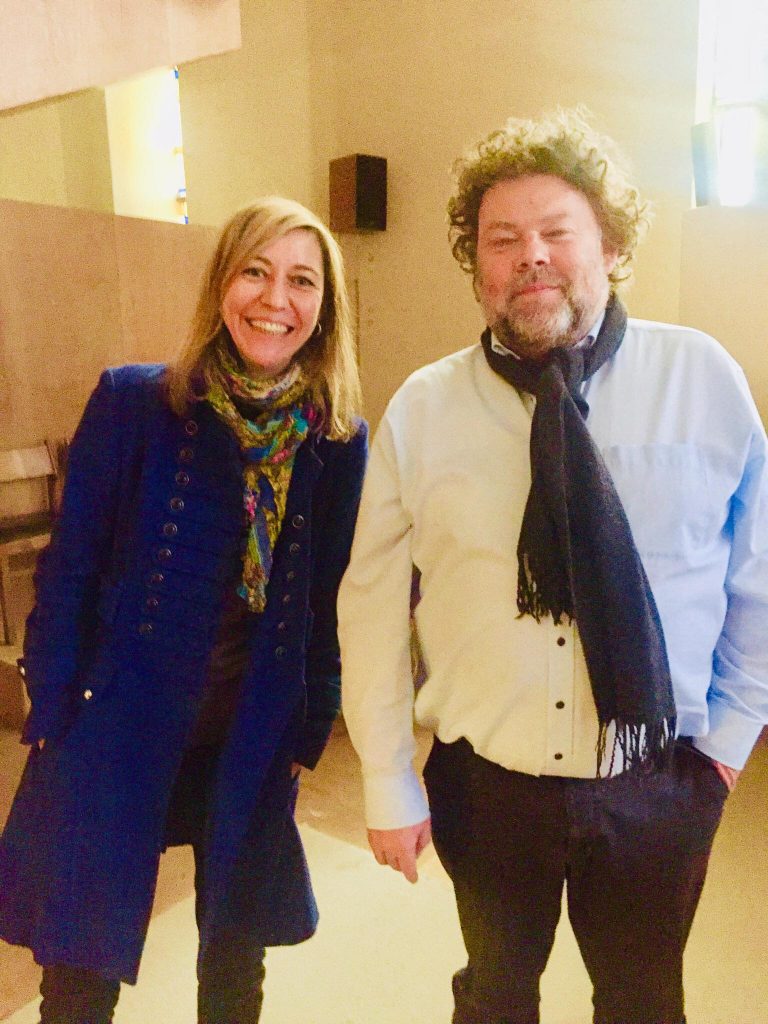
Jan Vermeire (to the right), Marina Kazakova (to the left)
“I am continually in awe by the organ’s range of characters, its endless palette of smells, colours, textures and tones. There is a contagious sacred aura surrounding an organ, and if you find the right notes, it can bring your feelings and artistic ideas to life in a way no other solo instrument can. No other instrument can shake your heart like an organ”.
_____
Learn more about Jan on: https://www.janvermeire.be/

